Colouring/Extending Chords Without Breaking Fingers!
In order to voice these richer chord "colour tones", we might ignore the bass root of the chord, if this root is being covered by one or more accompanying instruments.
For example, take the below chord shape, Cmaj9, which would be very awkward to finger if we were to include that bass root on the 6th string...

We could ignore the bass root of the chord, if this root is being covered by one or more accompanying instruments and just play the colour tones on the top four strings...


Or we could also omit neutral tones such as the 5th in the chord, like in this E♭13 example...


Both these omissions free up our fingers to voice more colourful and rich harmonic expressions for accompaniment.
Of course, if we're playing in the open position, or using any shape whereby the root and other tones can be covered by open strings, then these fuller voicings are more easily accessible for a solo performance. For example...

But when playing an accompanying part, outside the open position, we can cut down shapes to the most important tones in order to express these richer voicings.
A good place to start with this is where most of us leave off with the CAGED system...
Referencing CAGED To Extend Chords
The CAGED system shows us that there's a repeating sequence of overlapping shapes up the neck for same chord, C♯ major in this example...
C shape

A shape

G shape

E shape

D shape

This repeating sequence of shapes is movable and can correspond to any root note.
Now, hidden within and around each of these basic major forms are the seventh and extension tones that we can use to add more colour to our chord accompaniment. We'll be referencing the root positions on the 4th, 5th and 6th strings as we go...

C Shape Colouring
Starting with the C shape, and using its root position on the 5th string as a reference, we can build a basic cut down major voicing on the first four strings (the red square shows us where the bass root of the shape would be - C♯ in this example)...

By freeing up our fingers from the bass root, which would be covered by other instruments, we can more easily add 7ths and other colour tones.
The below chord chart shows you some of these more colourful chord voicings built around that 5th string root position, and its corresponding "C shape". Take note of the root position indicated by the red square and the R in the chord name (simply replace R with the root of the chord you're playing). You can play these voicings on any root, at any fret, and colour any major chord in the same way.
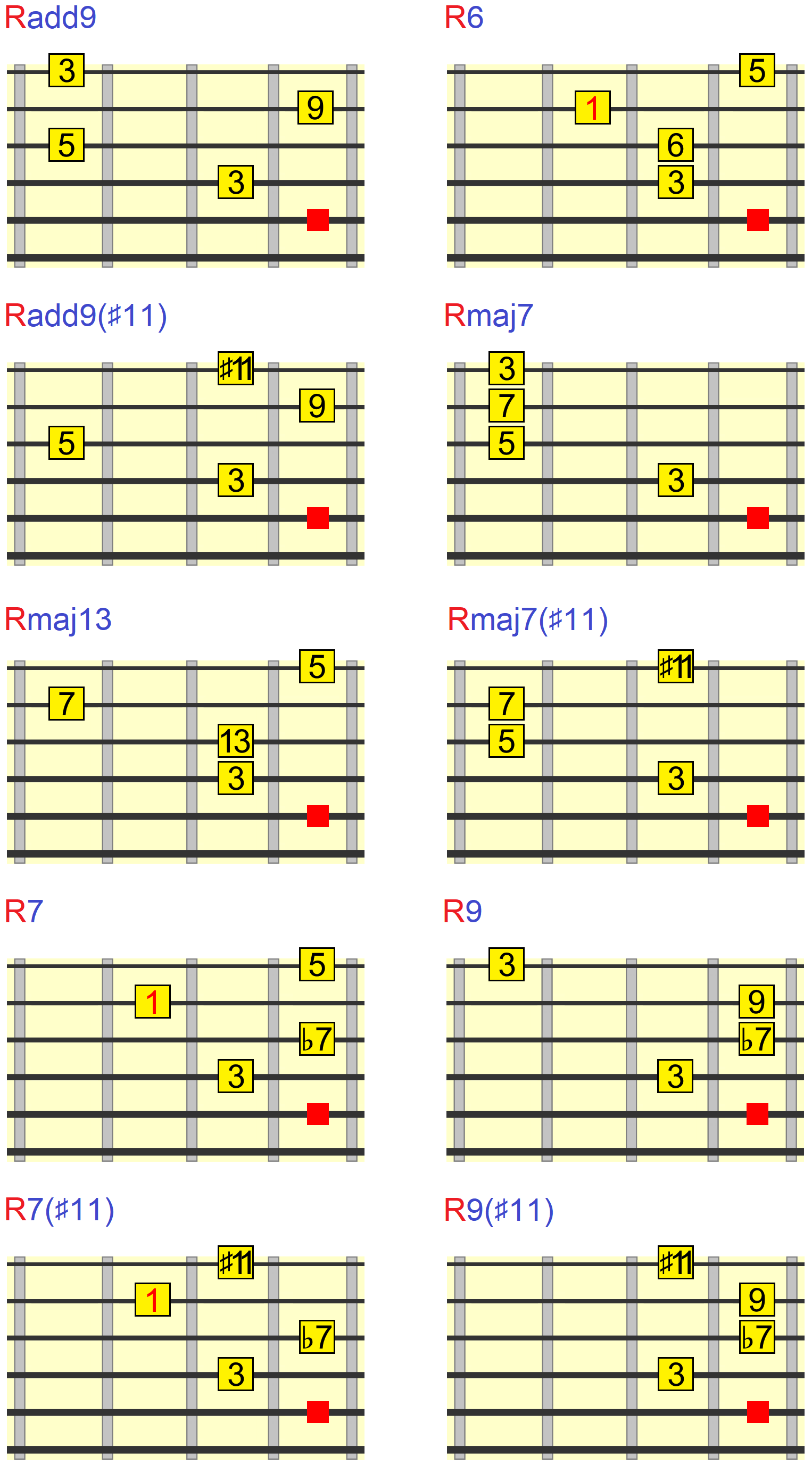
Of course, just like the full C shape, all these forms are movable and relative to the 5th string root position of the chord you're playing. For example, here I'm incorporating these colour shapes into a C# major key progression...

A Shape Colouring
Let's move to our next reference shape, the A shape, still referencing that same 5th string root position...

We're going to allow some overlap from the C shape, giving us another area in which to build colourful voicings that we can move cleanly and fluidly up the neck...
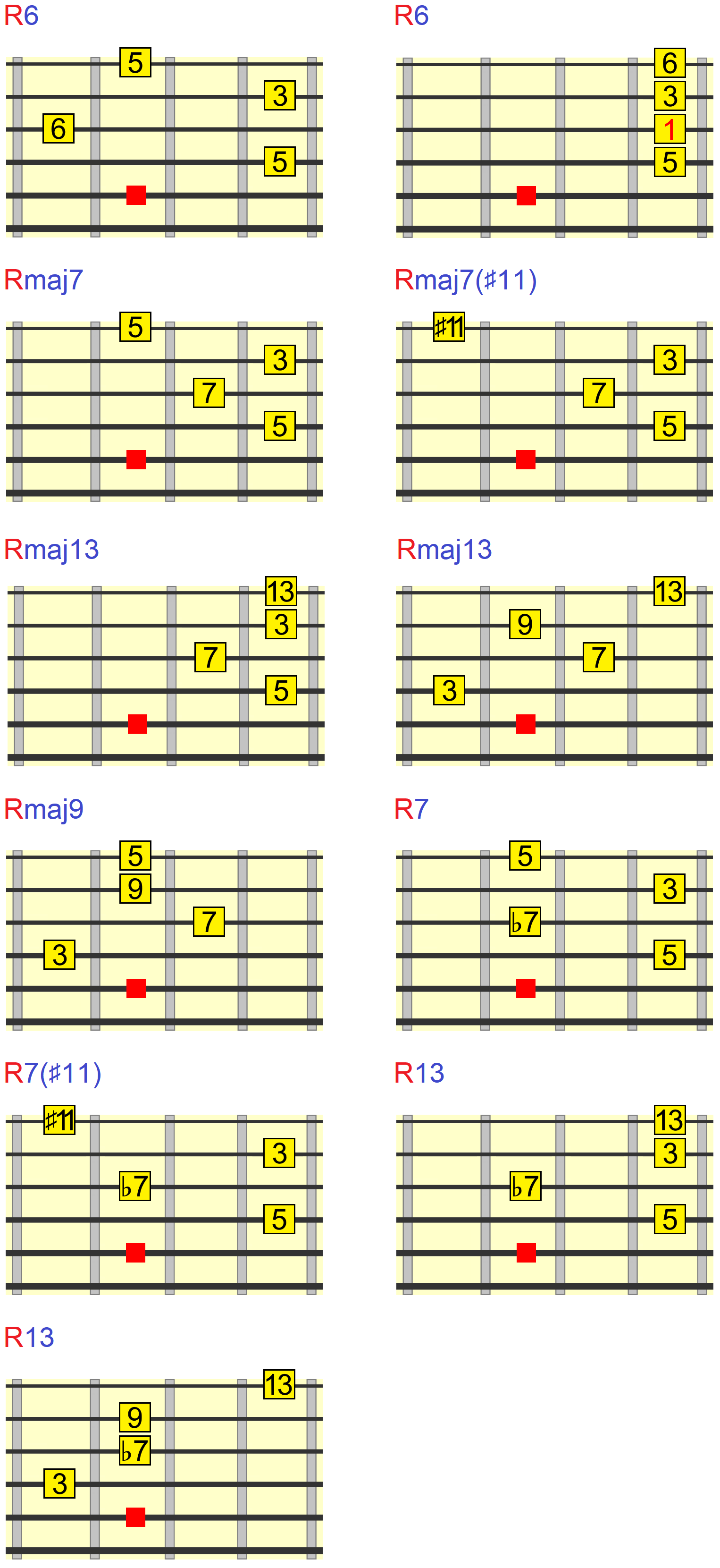
So there are two overlapping areas based around the 5th string root position, and the C and A shape, which allow us to form more complex voicings for accompaniment.

G Shape Colouring
On to our next shape, often referred to as the G shape in the CAGED system, with its bass root on the 6th string. Again I'm referencing this shape for C♯ major....

Again, there's some overlap between this shape and the previous A shape. Let's explore some 7th and extended voicings within this area.
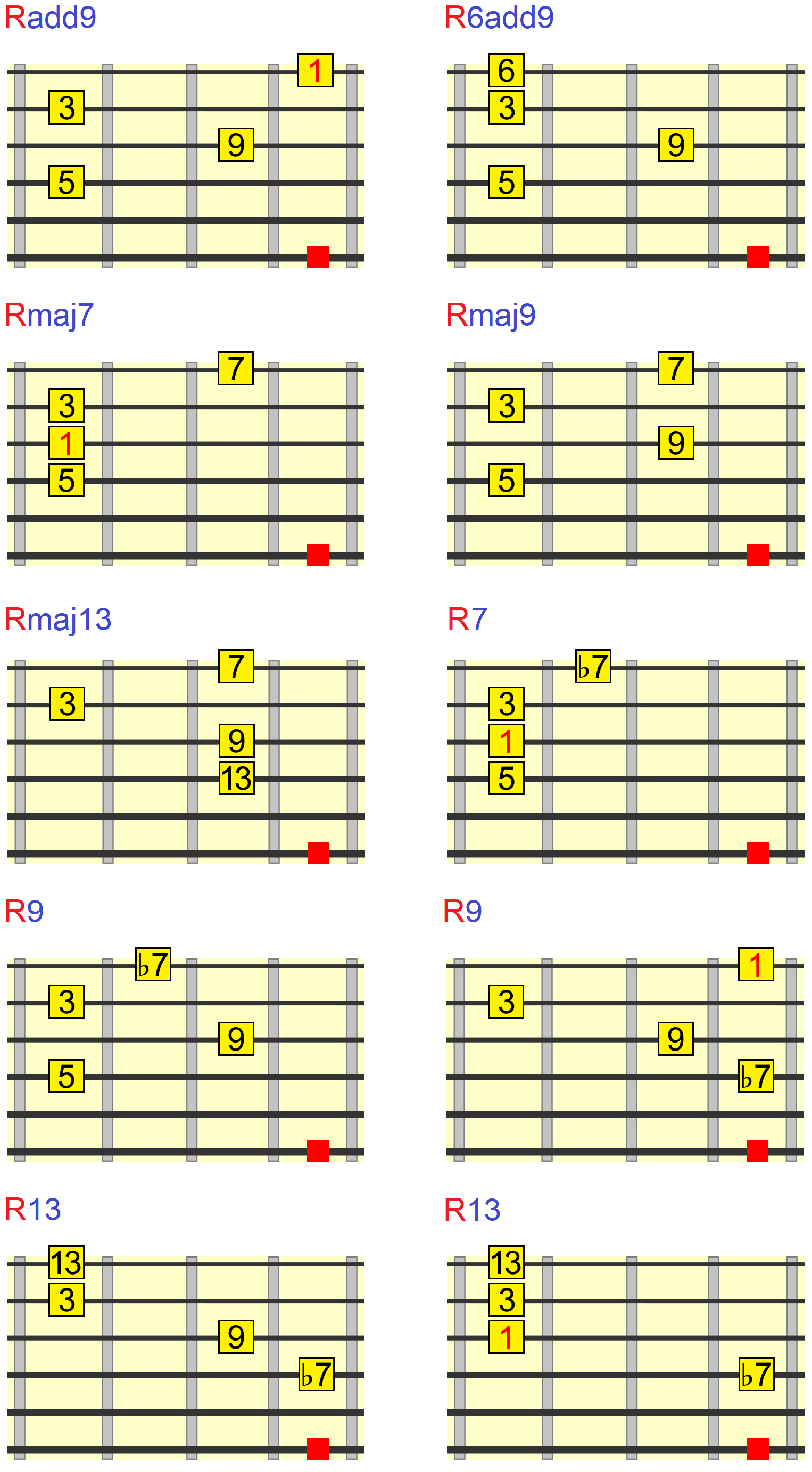
E Shape Colouring
Next shape, known most commonly as the E shape, again referencing the 6th string root position (C♯ major shown below)...

Again we can add some colour to the basic major triad by using the top 4 strings of the shape. And again, it's useful to see some overlap with the previous G shape area...
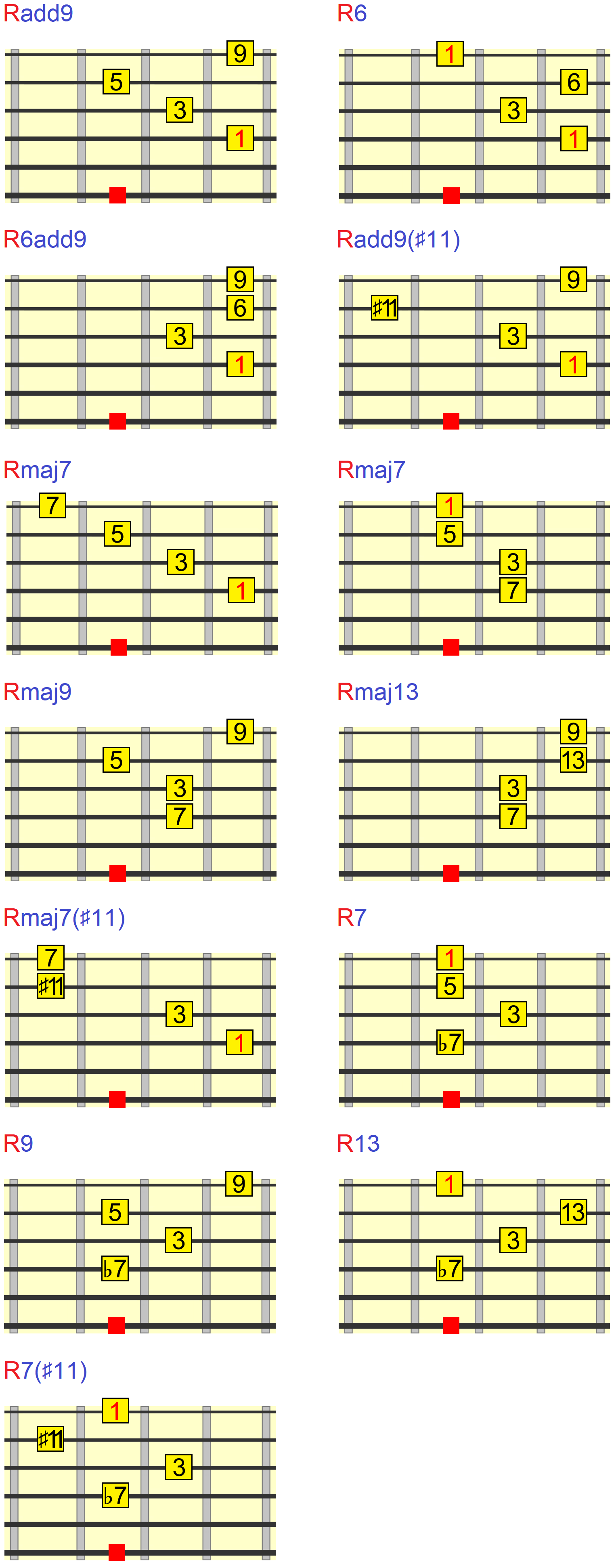
D Shape Colouring
And our final reference shape in the CAGED system, the D shape. Here's how we'd play C♯ major using the D shape...

As the root position for this shape lies on the 4th string, we can easily incorporate it into some of our colour shapes, though the triad shape (above) itself is quite awkward to finger and rarely used.
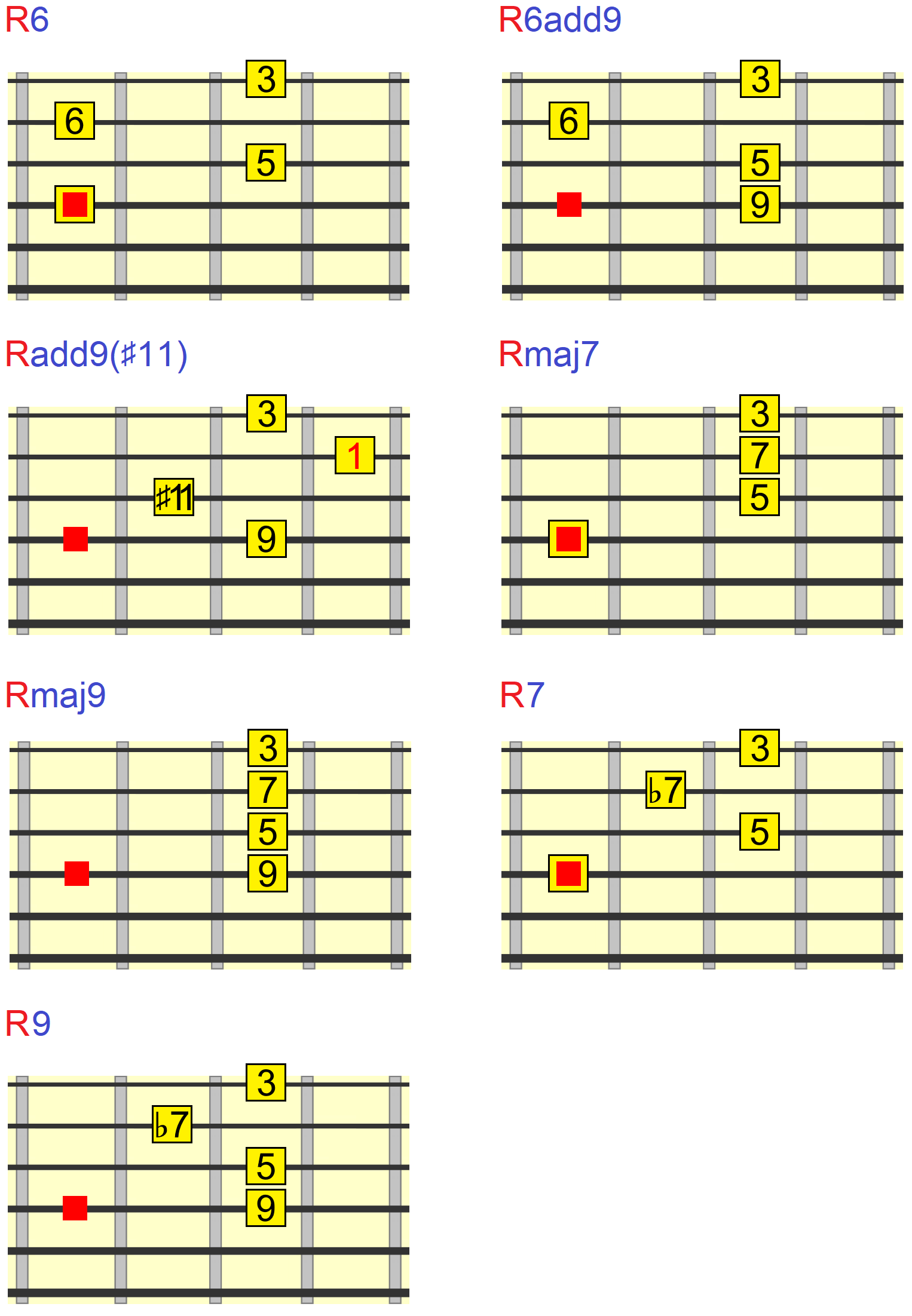
How To Use These Colour Shapes
So the main take away from this is that we can voice certain chord colours around those familiar CAGED reference shapes and root positions.
As an accompanying tool, it's not so important to voice tones such as the bass root, leaving us freer to focus on extending and colouring the existing harmony on the top 4 strings.
Here's an example of playing some of these shapes over C♯ major...

While this kind of chord extension playing will prove challenging when improvising in the moment, it can be useful when writing music over longer periods.
Simply try replacing the standard major chords with the colour shapes we learned around the chord's root positions. An example, using a 1 - 4 progression in the key of B major...

Guitar alone...
With drums and bass...
As you can hear from that example, these colour shapes allow us to create flowing movements of harmony over each chord, giving our chord playing more of a lead effect.
There are clearly a lot of shapes to learn. But even if you can pick out a few you especially like the sound of, you can then work on incorporating them into your songwriting and accompanying parts. I'm sure your fellow band members will appreciate the harmonic depth and dynamics you add to the music!
